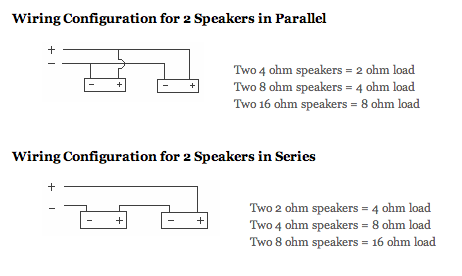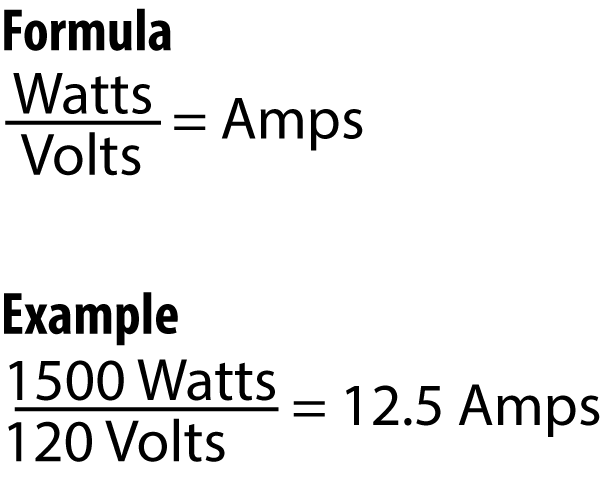You are currently viewing the course outline, but you’re not yet a member! Only certain modules will be available to you. To sign up for a membership to access the full course, check out our Plans and Pricing or Login
We’re up to our next to last individual component of a sound system – amplifiers!!!!
*Important: This module deals heavily with electricity. Electricity is incredibly dangerous. Never operate your gear in wet environments. If you ever are required to do any wiring beyond plugging your gear into wall outlets, be sure to consult a licensed electrician. They have spent years understanding electricity and can help get you up and running quickly and safely.
What Amps Do:
Amplifiers take a line level signal and boost it (amplify it) to a speaker level signal. Mic and line level signals are designed to carry signal only, they don’t carry enough power to actually power a loudspeaker to any significant volume. If you were to plug in a line level cable directly to a speaker you would not hear anything. Amplifiers take that line level signal and boost it up loud enough so the entire audience can hear (and sometimes feel) the audio. They do this by taking electrical energy from another power supply (like a wall outlet) and amplifying it so it matches the signal.
The technical components of how amplifiers actually work are beyond the scope of this module, but we’re going to talk a little bit about wiring. Wiring an amplifier the wrong way can cause you to destroy components of your sound system so taking time to understand the proper wiring setup not only makes your system behave better, but it also ensures you don’t break or put undue stress on any of the system components.
*Note: These are guidelines that generally hold true, but all systems are different. Be sure to consult the owners manuals and manufacturer’s guidelines before wiring these components. The last thing you want to buy all new sound gear because something was wired incorrectly.
Parallel and Series Wiring
When wiring speakers into an amplifier, there are two primary ways they can be wired.
A common method of wiring speakers is in parallel. Parallel wiring does bring some advantages (which we’ll talk about in just a minute), but it is slightly more complicated to set up than series wiring.
By far the most common wiring is series wiring. You simply run a cable from the amplifier to the speaker and then take another cable to the next speaker. Assuming that the speaker doesn’t have internal wiring that changes the wiring setup (some do), your speakers will then be wired in series.
Check out this diagram of a typical setup of speakers wired in parallel and series.

Image Courtesy of Eminence Speakers
Ohm My Goodness! Understanding Impedance When Wiring Speakers
In electrical terms, an ohm is a measure of resistance. A typical amplifier varies its output wattage based upon the resistance that it faces. These two numbers are inversely proportional – as the resistance increases, the wattage decreases. To help illustrate, here are the specs from an amplifier that is actually for sale today:
Although they vary by model and manufacturer, the majority of lower end PA speakers are rated at 8 ohms although some can operate as low as 4 or sometimes even 2 ohms.
When wiring speakers understanding ohm loads is very important. If the ohm load is too high, you won’t get very much power out of your amplifier that actually gets converted into sound. If the ohm load is too low, you can easily blow up your amplifier! Neither of those options is good, so understanding how to wire your speakers can not only make your system setup better, but it can actually stop you from damaging your gear.
Wiring in Parallel:
When wiring speakers in parallel, every additional speaker cuts the resistance in half. If we use the same speaker we referenced in the previous module, we remember that that particular speaker was an 8 ohm speaker with dual ¼ in connectors on speaker. Further, the specs of the speaker told us that this particular speaker was wired in parallel.
If you hooked a single speaker up to the amplifier we listed above, it could give you 450 watts (per channel) at 8 ohms. If you used the built in jack on the back of the speaker to add another, you would lower the resistance to 4 ohms. At 4 ohms, this amplifier is capable of pushing 750 watts to the speakers. With three speakers wired in parallel, the resistance drops to 2 ohms and this amp would be pushing 1250 watts per channel.
You’ll likely never use an amplifier that is rated for below 2 ohms – and many low-end amplifiers are not rated below 4 ohms. So with this particular amplifier, we should not hook more than three separate 8 ohm speakers to the amplifier. Doing so would push the amplifier past its rated specs and could destroy the amplifier.

Image Courtesy of Eminence Speakers
Now it’s important to understand that the reason this speaker behaved the way it did was because the manufacturer told us that when we hook them together, they are wired in parallel. Typically when you daisy chain raw speakers together, they are wired in series. However the manufacturer of this particular box made some internal wiring changes within the speaker itself, meaning when we daisy chain two speakers together, they behave as if they are wired in parallel.
If you were to hook two drivers directly to the amp in this daisy chain method, they would be wired in series. It’s important to understand not only series and parallel wiring, but it’s also important to know how the manufacturer wired their own loudspeaker. The only way to know this is to look at the owners manual or the back of the speaker itself.
Wiring in Series:
When wiring speakers in series, you simply connect the positives and negatives together in a series of repeating connections.

Image Courtesy of Eminence Speakers
When wiring speakers in series, you add the resistances (ohms) of the speakers together. For example, if you wired two 4 ohm speakers in series, you would be driving the amplifier at 8 ohms. Whenever you add speakers to a series wiring setup, you add more resistance, actually reducing the amount of energy that makes it to the speaker. As such, series wiring is less common, but you can hook more speakers together without blowing up an amplifier, you will just have to push the amp much harder to get a similar level of volume.
Other Notes with Amplifiers:
For most entry level sound systems, amplifiers are the most power hungry components. If you’re going to blow a circuit from pulling too much power from your source (wall outlet, generator, etc.), you’re most likely to do that on the circuits that the amplifiers are wired on. So while we’re on the topic of electricity and numbers, let’s talk a little about wiring components into power outlets.
Most outlets that you’ll see in houses of worship, bars, and other installations are either 15 or 20 amps. However, when you look at the tags on your electronics, you’ll notice that they are usually rated in watts rather than amps. So what does that mean?
Amps are calculated by dividing watts by the number of volts in your venue. In almost all venues in North America, the voltage is somewhere between 110 and 120 volts. So say you look at your amplifier, and it is pulling about 1500 watts of power. You take 1500 watts and divide it by 120 volts. The result is 12.5 amps. So you should be fine with a single amplifier plugged into this outlet, but you should definitely not plug two amplifiers into the same circuit.
Usually a two plug wall outlet is on only one circuit. Just because it is a different plug, doesn’t necessarily mean it’s on a separate circuit. In fact, many times several plugs throughout a room will be on the same circuit. If you plugged two of these 1500 watt amps into any of those plugs, you would likely overload the circuit. It’s always best to talk with the venue manager or electrician to figure out which outlets are on which circuits so that you can balance your power load evenly.

The Formula
What happens if you overload a circuit? In the best case, you will trip a breaker or blow a fuse. This will kill power to that entire circuit, and you’ll be left without these amplifiers (and whatever else happened to be plugged into that circuit). However overloading circuits can be dangerous because some systems (especially older facilities) won’t trip a breaker or blow a fuse. As a result, you can overheat cables and circuits, potentially causing a fire.
[kkstarratings]